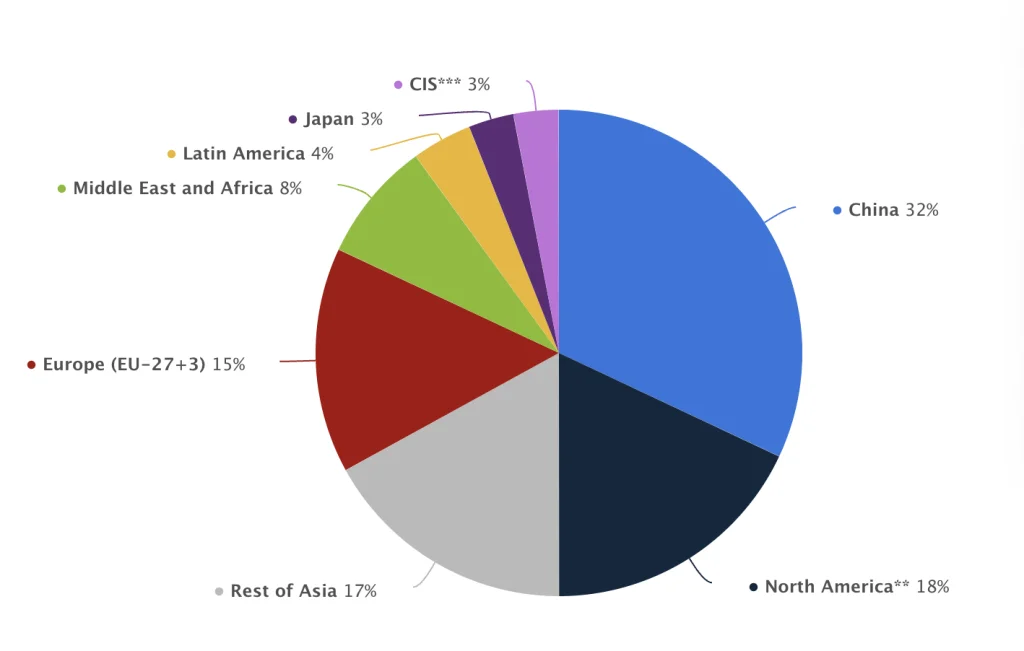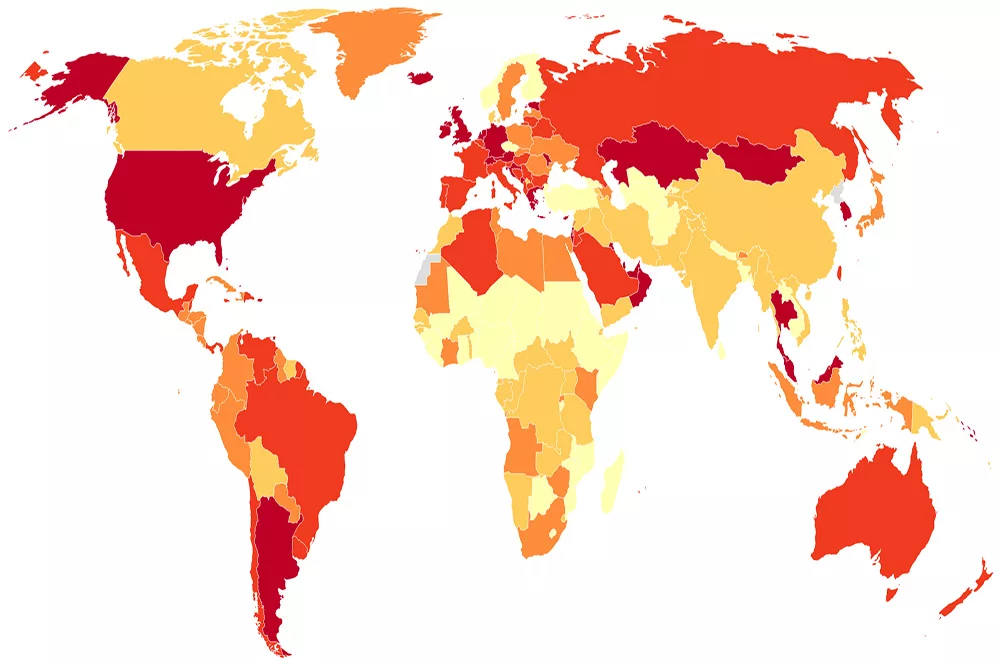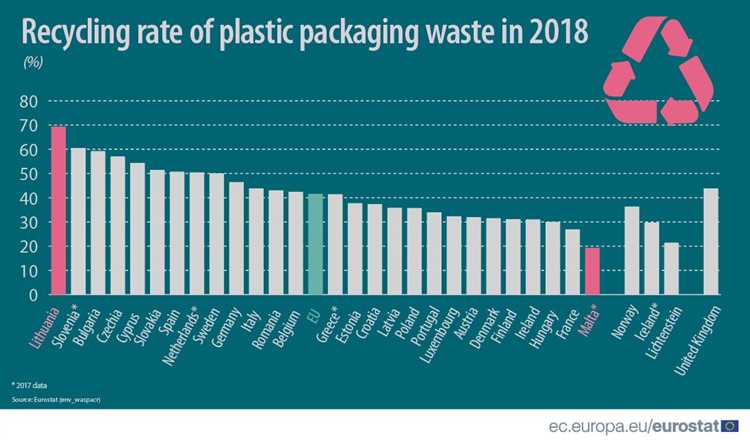
Plastic production has been a prominent industry across Europe for several decades. The versatile and cost-effective nature of plastics has led to their widespread use in various sectors, including packaging, construction, and automotive. As the demand for plastic products continues to rise, it begs the question: which country in Europe takes the lead as the top plastic producer?
Germany, being Europe’s largest economy, has historically held a dominant position in plastic production. With its advanced manufacturing capabilities, the country has established itself as a global powerhouse in the industry. Germany’s expertise in plastics extends beyond production, with notable contributions to research and development. This continuous innovation has allowed the country to maintain its position at the forefront of the European plastic market.
However, other countries in Europe have also made significant strides in plastic production. Italy, for instance, boasts a strong manufacturing sector and has emerged as a major player in the European plastics industry. With a focus on technological advancements and sustainability, Italian manufacturers have been able to compete with their German counterparts and expand their market share.
Another contender for the top spot is France, which has made substantial investments in plastic production in recent years. The country’s commitment to sustainability and circular economy solutions has propelled its plastic industry forward. French companies have embraced eco-friendly practices and developed innovative materials, ensuring their competitiveness in the European market.
- Europe’s Top Plastic Producer
- Graphical Overview: The Plastic Production in Europe
- Plastic Production by Country
- Trends and Insights
- Leading Country: Top Competitor in European Plastic Production
- Germany’s Dominance in Plastic Production
- Advantages of German Plastic Production
- Factors Behind Success: Economic and Geographical Influences
- Sustainable Approach: Environmental Initiatives of Plastic Production
- Market Outlook: Projections for European Plastic Production
- Question-answer:
- Which country in Europe is the top plastic producer?
- What are the reasons behind Germany’s success in plastic production?
- How does plastic production affect the environment?
- What measures are being taken to reduce plastic production and waste in Europe?
- Are there any alternative materials that can replace plastic?
Europe’s Top Plastic Producer
When it comes to plastic production in Europe, one country stands out as the top producer: Germany. With its advanced manufacturing capabilities, Germany produces a significant amount of plastic each year. In fact, it is estimated that Germany produces over 14 million tons of plastic annually.
Germany’s position as the top plastic producer in Europe can be attributed to several factors. First and foremost, the country has a strong and well-developed manufacturing industry. This industry is supported by a highly skilled workforce and advanced technological infrastructure.
In addition, Germany has a robust recycling system in place, which allows for efficient reuse and recycling of plastic waste. This not only helps to reduce the environmental impact of plastic production but also contributes to the country’s overall plastic production capacity.
Furthermore, Germany’s plastics industry is constantly innovating and developing new plastic materials and manufacturing processes. This continuous drive for innovation ensures that the country remains at the forefront of plastic production in Europe.
While Germany leads in plastic production, other European countries also play a significant role in the industry. Countries such as Italy, France, and the United Kingdom have well-established plastic manufacturing sectors and contribute to Europe’s overall plastic production capacity.
However, it is worth noting that plastic production and consumption are increasingly coming under scrutiny due to their environmental impact. As such, there is a growing interest in finding sustainable alternatives to plastic and reducing plastic waste.
In conclusion, Germany is Europe’s top plastic producer, thanks to its strong manufacturing industry, efficient recycling system, and commitment to innovation. However, as the environmental impact of plastic becomes more apparent, there is a need for the industry to shift towards more sustainable practices.
Graphical Overview: The Plastic Production in Europe
In recent years, plastic production in Europe has been growing exponentially, contributing to a serious environmental problem. To understand the scale of this issue, let’s take a closer look at the plastic production in different European countries.
Plastic Production by Country
The table below provides a graphical overview of the top plastic-producing countries in Europe.
| Country | Plastic Production (in million tons) |
|---|---|
| Germany | 12.5 |
| Italy | 9.8 |
| France | 8.3 |
| Spain | 7.2 |
| Poland | 6.5 |
Trends and Insights
From the table, we can see that Germany leads in plastic production with 12.5 million tons, followed closely by Italy with 9.8 million tons. France, Spain, and Poland also contribute significantly to the plastic production in Europe, with 8.3 million tons, 7.2 million tons, and 6.5 million tons, respectively.
These numbers highlight the high production levels of plastics in Europe and the urgent need for sustainable solutions to reduce plastic waste. It is crucial for governments and industries to work together to promote recycling, develop eco-friendly alternatives, and implement stricter regulations to tackle the plastic pollution problem.
Leading Country: Top Competitor in European Plastic Production

Germany’s Dominance in Plastic Production
Germany has cemented its position as the top producer of plastics in Europe, with a robust and technologically advanced manufacturing sector. The country’s strong economy, extensive research and development capabilities, and well-established infrastructure have contributed to its success in the plastic production industry.
German plastic manufacturers have implemented innovative production techniques and have invested heavily in modern technologies. These advancements have allowed Germany to increase production efficiency and maintain high-quality standards, making it the go-to country for plastic-related products.
Advantages of German Plastic Production
Germany’s plastic production industry benefits from several advantages that have helped it surpass its European competitors. Some key advantages include:
- Skilled Workforce: Germany boasts a highly skilled and well-educated workforce, which is crucial for the development and implementation of advanced plastic production techniques.
- Research and Development: The country’s strong emphasis on research and development has led to continuous innovation and improvement in the plastic production sector.
- Infrastructure: Germany’s excellent infrastructure, including well-connected transportation networks and industrial parks, facilitates the smooth functioning of the plastic production industry.
- Sustainability: German plastic manufacturers prioritize sustainability, adhering to strict environmental regulations and promoting the use of renewable resources in their production processes.
These factors, combined with Germany’s commitment to quality and efficiency, have positioned the country as Europe’s top competitor in plastic production.
Factors Behind Success: Economic and Geographical Influences

Several factors contribute to the success of a country in becoming Europe’s top plastic producer. Among the most significant factors are economic and geographical influences.
Economically, countries with strong manufacturing sectors and a robust industrial base are more likely to excel in plastic production. These countries often have well-established supply chains, access to required raw materials, and a skilled workforce. Additionally, a favorable business environment, including supportive government policies and incentives, can stimulate growth in the plastic manufacturing sector.
Geographical factors also play a crucial role. Countries with easy access to major transportation routes, such as ports and highways, have a competitive advantage in the plastic production industry. Proximity to key markets and trading partners allows for efficient distribution and exportation of plastic products. Furthermore, favorable climate conditions may contribute to the availability of certain raw materials or facilitate the production processes.
Moreover, the presence of research and development centers, universities, and specialized institutes focused on plastic engineering and technology can significantly contribute to a country’s success as a top plastic producer. These institutions foster innovation, drive technological advancements, and enhance the overall competitiveness of the country’s plastic industry.
Overall, a combination of economic and geographical influences, along with the availability of resources, skilled workforce, favorable business environment, and a focus on continuous innovation, contribute to a country’s success as Europe’s top plastic producer.
Sustainable Approach: Environmental Initiatives of Plastic Production
With the increasing concern for the environment, plastic production companies in Europe have been taking steps towards more sustainable practices. These initiatives aim to reduce the impact of plastic production on the environment and promote the use of recycled materials.
One of the key initiatives taken by plastic producers is the implementation of recycling programs. These programs encourage consumers to recycle their plastic waste and ensure that it is properly processed and reused. Additionally, companies are investing in technologies that allow for the efficient recycling of plastic, reducing the amount of waste that ends up in landfills or oceans.
Furthermore, plastic producers are actively seeking alternatives to traditional plastic materials. They are exploring the use of biodegradable and compostable materials that can break down naturally and have a lower impact on the environment. Research and development efforts are focused on creating new materials that have the same properties as plastic but without the negative environmental consequences.
In addition to material alternatives, plastic production companies are also investing in energy-efficient manufacturing processes. These processes aim to reduce the carbon footprint of plastic production by optimizing energy usage and minimizing waste. By using renewable energy sources and implementing energy-saving technologies, companies can significantly reduce their environmental impact.
Another important aspect of sustainable plastic production is reducing plastic pollution. To tackle this issue, companies are actively participating in clean-up initiatives and supporting organizations that work towards the protection of marine and land ecosystems. They are also educating consumers about the importance of responsible plastic use and the proper disposal of plastic waste.
In conclusion, plastic production companies in Europe are making significant efforts towards a more sustainable approach. By implementing recycling programs, exploring alternative materials, adopting energy-efficient manufacturing processes, and reducing plastic pollution, they are taking important steps towards minimizing the environmental impact of plastic production.
Market Outlook: Projections for European Plastic Production
As Europe’s top plastic producer, the continent plays a significant role in the global plastic industry. In recent years, there has been a growing concern about the environmental impact of plastic waste, leading to increased efforts to reduce plastic consumption and promote recycling. These developments have had an impact on the projections for European plastic production in the coming years.
1. Growth in Sustainable Plastics: With the growing focus on sustainability, there is a projected increase in the production of sustainable plastics in Europe. This includes biodegradable and compostable plastics, as well as plastics made from renewable resources such as bio-based polymers. The demand for sustainable plastics is expected to rise as more industries and consumers seek eco-friendly alternatives to traditional plastics.
2. Restrictions on Single-use Plastics: Several European countries have implemented or plan to implement restrictions on single-use plastics. This includes items such as plastic bags, straws, and cutlery. These restrictions are aimed at reducing plastic waste and encouraging the use of reusable alternatives. As a result, the production of single-use plastics is projected to decrease in the coming years.
3. Investments in Recycling Infrastructure: To address the plastic waste issue, there is a growing emphasis on expanding and improving recycling infrastructure in Europe. This includes investments in recycling facilities and technologies that can effectively process various types of plastic waste. The goal is to increase the recycling rates and minimize the amount of plastic that ends up in landfills or becomes litter.
4. Shift towards Circular Economy: The concept of a circular economy, where resources are used and reused in a closed-loop system, is gaining momentum in Europe. This shift implies a move away from the traditional linear economy, where products are used and discarded. In a circular economy, plastics are designed for durability, recyclability, and reuse, which can have an impact on the production and consumption patterns of plastics in Europe.
Overall, the market outlook for European plastic production is likely to witness several changes in the coming years. The demand for sustainable plastics is expected to rise, while restrictions on single-use plastics are likely to reduce their production. Investments in recycling infrastructure and a shift towards a circular economy will also influence the production and consumption patterns of plastics in Europe.
Question-answer:
Which country in Europe is the top plastic producer?
The top plastic producer in Europe is Germany.
What are the reasons behind Germany’s success in plastic production?
Germany’s success in plastic production can be attributed to its strong chemical industry, advanced technology, and research and development capabilities.
How does plastic production affect the environment?
Plastic production has a significant negative impact on the environment as it contributes to pollution, climate change, and marine pollution. It also leads to the depletion of natural resources and harms wildlife.
What measures are being taken to reduce plastic production and waste in Europe?
In Europe, measures such as implementing plastic taxes and bans, promoting recycling and reuse, and encouraging the use of alternative materials are being taken to reduce plastic production and waste.
Are there any alternative materials that can replace plastic?
Yes, there are various alternative materials that can replace plastic, such as biodegradable plastics, paper, glass, metal, and natural fibers. However, each material has its own advantages and limitations.